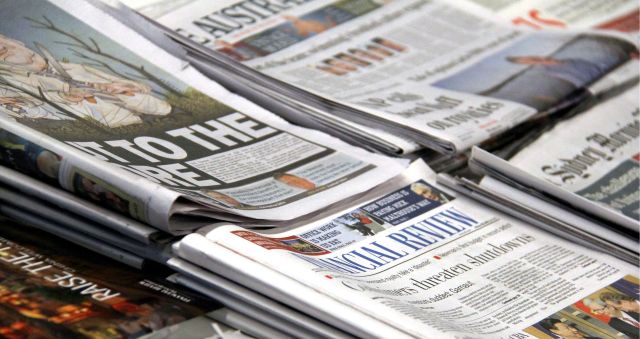
For the year to September the printing industry registered a 1.3 per cent growth, the ABS has also revised up the June 2012 quarter data which now shows growth of 3.4 per cent.
Hagop Tchamkertenian, national manager for policy and government affairs, Printing Industries says, “This time around most of the official data is reporting an upward movement in industry activity. The sales, new investment and especially economic growth data all confirm that the printing industry succeeded in arresting the decline of activity during the most recent quarter.”
The Australian economy grew by 0.6 per cent during the September quarter resulting in an annual growth rate of 3.4 per cent.
Tchamkertenian says, “If the growth trend can be maintained then the printing industry may have reached a critical juncture in its transition. But to be certain of trends, we need to see successive quarters of improvements before any definite conclusions are drawn.”
The ABS data shows that during the September 2012 quarter new capital expenditure in the printing industry rose by 2.3 per cent compared to the previous quarter. While the latest quarter outcome helps to reverse three consecutive quarters of reported decline, the modest lift in new capital expenditure was not sufficient to overcome the previous declines and as a consequence the new capital expenditure position deteriorated by 42.9 per cent compared to the same period a year earlier.
During the year to September 2012 the printing industry outlaid $212m in new investments which represents a deterioration of 10.5 per cent on the same period a year earlier when the total new investments stood at $237m.
Industry projections point to modest investment plans over the next nine months with about $116m identified in the industry investment pipeline.
Printing industry sales were reported to have improved by 4.6 per cent during the September 2012 quarter compared to the previous quarter and were up marginally (0.1 per cent) compared to the same period a year earlier. During the year to September printing industry sales totalled $7.2 billion representing deterioration of 6 per cent on the same period a year earlier.
Another key industry indicator, pre-tax profits which measure and report back on the profitability situation of businesses employing 20 plus employees, fell sharply during the September quarter compared to the previous quarter. The 31.1 per cent decline however is dwarfed when comparing the September quarter outcome to that of the same period a year earlier which showed a decline in the order of 70.5 per cent.
During the year to September 2012 the larger businesses in the printing industry reported a pre-tax profit of $370 million, a decline of 46.1 per cent on the $686 million outcome reported a year earlier.
Tchamkertenian “Take the sales data for instance, the longer term comparison shows sales have declined by $463 million during the 12 months to September 2012. That decline means that based on the sales figures alone, the printing industry may have lost the capacity to support some 2,270 full time positions.”
Tchamkertenian expressed hope that the decision of the Reserve Bank of Australia to further ease monetary policy would hopefully maintain the renewed momentum in the printing industry.
He says, “Tuesday’s decision to reduce official interest rates to their lowest level since the period of the Global Financial Crisis (GFC) is an indication that the RBA is concerned about the underlying strength of domestic economic activity as investment in the resources sector starts to peak and the impact of a weaker terms of trade starts to flow on. A lower cash rate should also exert downward pressure on the Australian dollar which has surprised commentators by its continued strength.”
“The cash rate has now dropped to the level that during the GFC period was referred to as emergency levels. Hopefully this latest rate cut as well as expectations that more cuts could follow in the new year will prompt Australian consumers to loosen their purse strings just a bit as retail trade activity continues to remain weak.”
“The printing industry usually benefits from any upsurge in economic activity caused by increased discretionary spending. How much of the cash rate cut translates into increased spending will be determined by the proportion of the official rate cut that will be past on to the consumers by the banking sector as well as the reaction of consumers to the latest rate cut. “
“If consumer confidence lifts on the back of the latest easing of monetary policy, then we are likely to see some positive spin offs from the latest decision. If however consumer confidence stalls, then we may have to wait for another monetary policy easing to support economic activity. For businesses experiencing financial viability issues let us hope the wait is not too long.” Tchamkertenian concluded.
Comment below to have your say on this story.
If you have a news story or tip-off, get in touch at editorial@sprinter.com.au.
Sign up to the Sprinter newsletter


